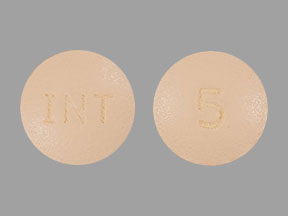Ocaliva Dosage
Generic name: OBETICHOLIC ACID 5mg
Dosage form: tablet, film coated
Drug class: Miscellaneous GI agents
Medically reviewed by Drugs.com. Last updated on Nov 7, 2024.
Important Dosage and Administration Instructions
Prior to the initiation of OCALIVA, healthcare providers should determine whether the patient has decompensated cirrhosis (e.g., Child-Pugh Class B or C), has had a prior decompensation event, or has compensated cirrhosis with evidence of portal hypertension (e.g., ascites, gastroesophageal varices, persistent thrombocytopenia) because OCALIVA is contraindicated in these patients.
Recommended Dosage Regimen
The recommended dosage of OCALIVA for PBC patients without cirrhosis or with compensated cirrhosis who do not have evidence of portal hypertension, who have not achieved an adequate biochemical response to an appropriate dosage of UDCA for at least 1 year or are intolerant to UDCA follows below:
- Start with a dosage of 5 mg once daily for the first 3 months.
- After the first 3 months, for patients who have not achieved an adequate reduction in ALP and/or total bilirubin and who are tolerating OCALIVA, increase to a maximum dosage of 10 mg once daily.
Monitoring to Assess Safety, Need for OCALIVA Discontinuation
Routinely monitor patients during OCALIVA treatment for biochemical response, tolerability, and progression of PBC. Closely monitor patients with compensated cirrhosis, concomitant hepatic disease (e.g., autoimmune hepatitis, alcoholic liver disease), and/or severe intercurrent illness for new evidence of portal hypertension (e.g., ascites, gastroesophageal varices, persistent thrombocytopenia) or increases above the upper limit of normal in total bilirubin, direct bilirubin, or prothrombin time. Permanently discontinue OCALIVA in patients who develop laboratory or clinical evidence of hepatic decompensation, have compensated cirrhosis and develop evidence of portal hypertension, experience clinically significant hepatic adverse reactions, or develop complete biliary obstruction.
Management of Patients with Intolerable Pruritus on OCALIVA
For patients with intolerable pruritus on OCALIVA, consider one or more of the following management strategies:
- Add an antihistamine or bile acid binding resin.
- Reduce the dosage of OCALIVA to:
- 5 mg every other day, for patients intolerant to 5 mg once daily.
- 5 mg once daily, for patients intolerant to 10 mg once daily.
- Temporarily interrupt OCALIVA dosing for up to 2 weeks. Restart at a reduced dosage.
For patients whose dosage is reduced or interrupted, titrate the dosage based on biochemical response and tolerability.
Consider discontinuing OCALIVA treatment in patients who continue to experience persistent, intolerable pruritus despite management strategies.
Frequently asked questions
More about Ocaliva (obeticholic acid)
- Check interactions
- Compare alternatives
- Reviews (3)
- Drug images
- Latest FDA alerts (4)
- Side effects
- During pregnancy
- FDA approval history
- Drug class: miscellaneous GI agents
- En español
Patient resources
Professional resources
Related treatment guides
See also:
Further information
Always consult your healthcare provider to ensure the information displayed on this page applies to your personal circumstances.


